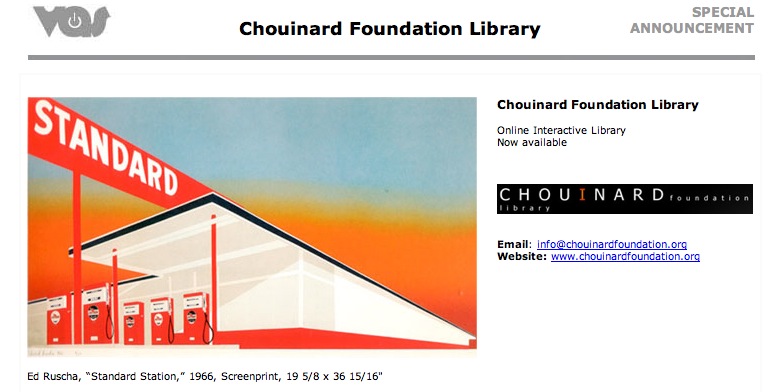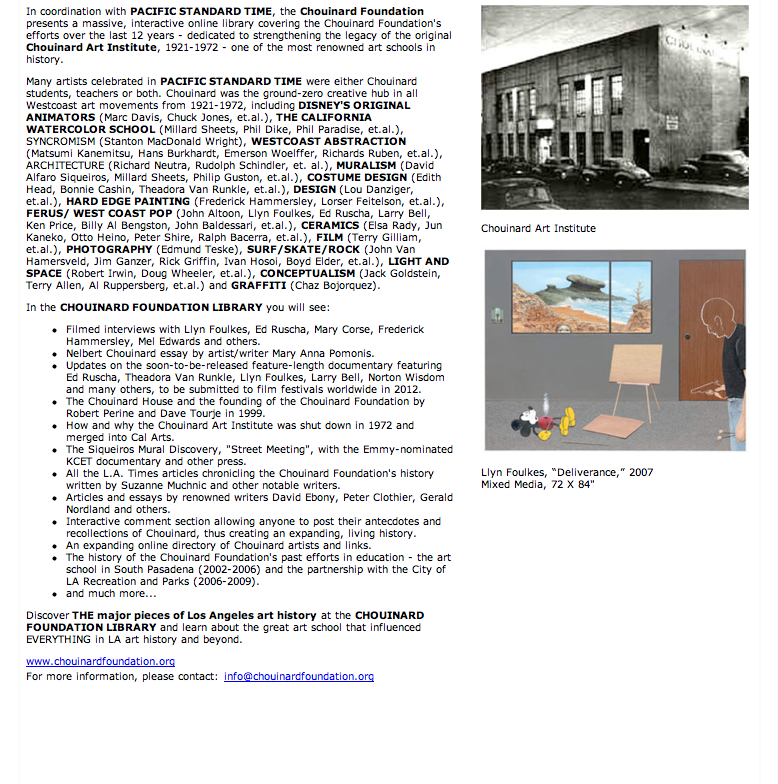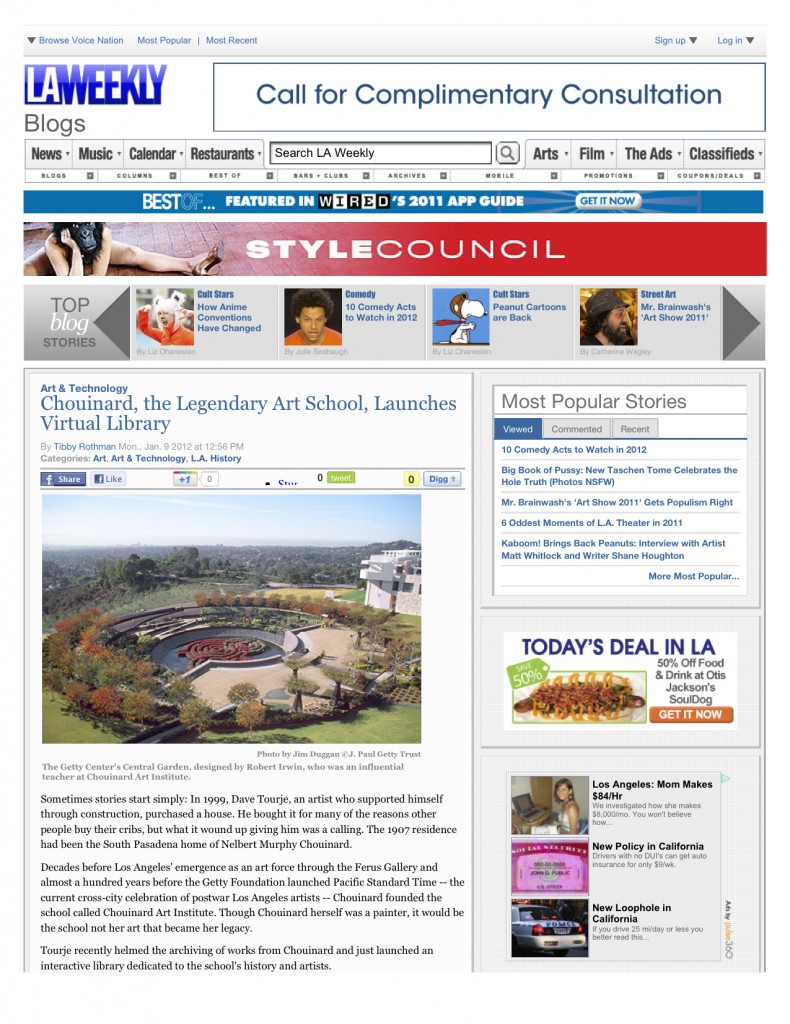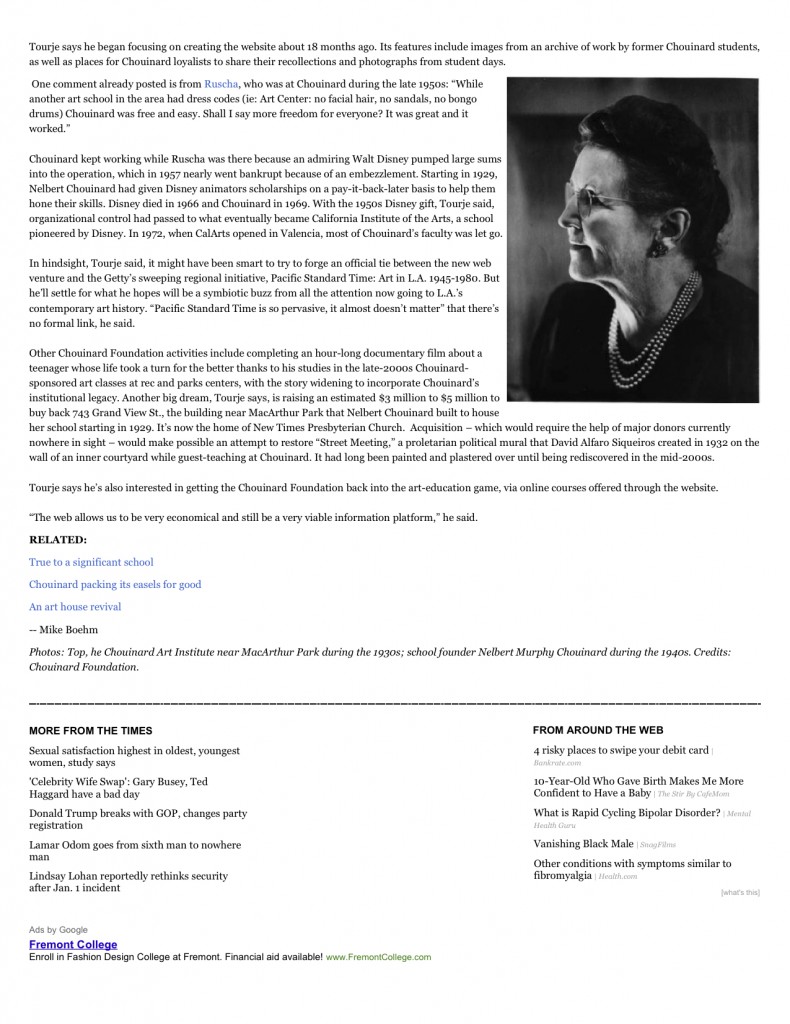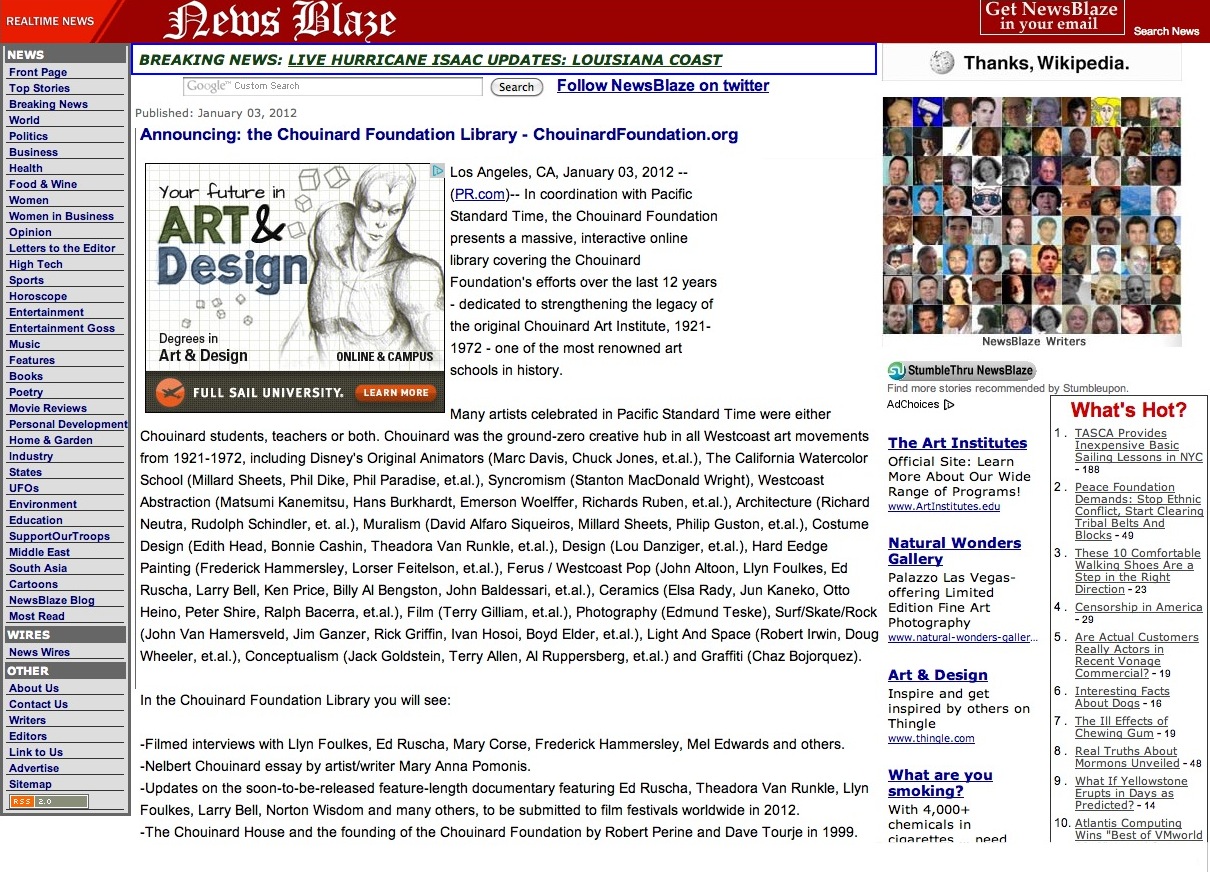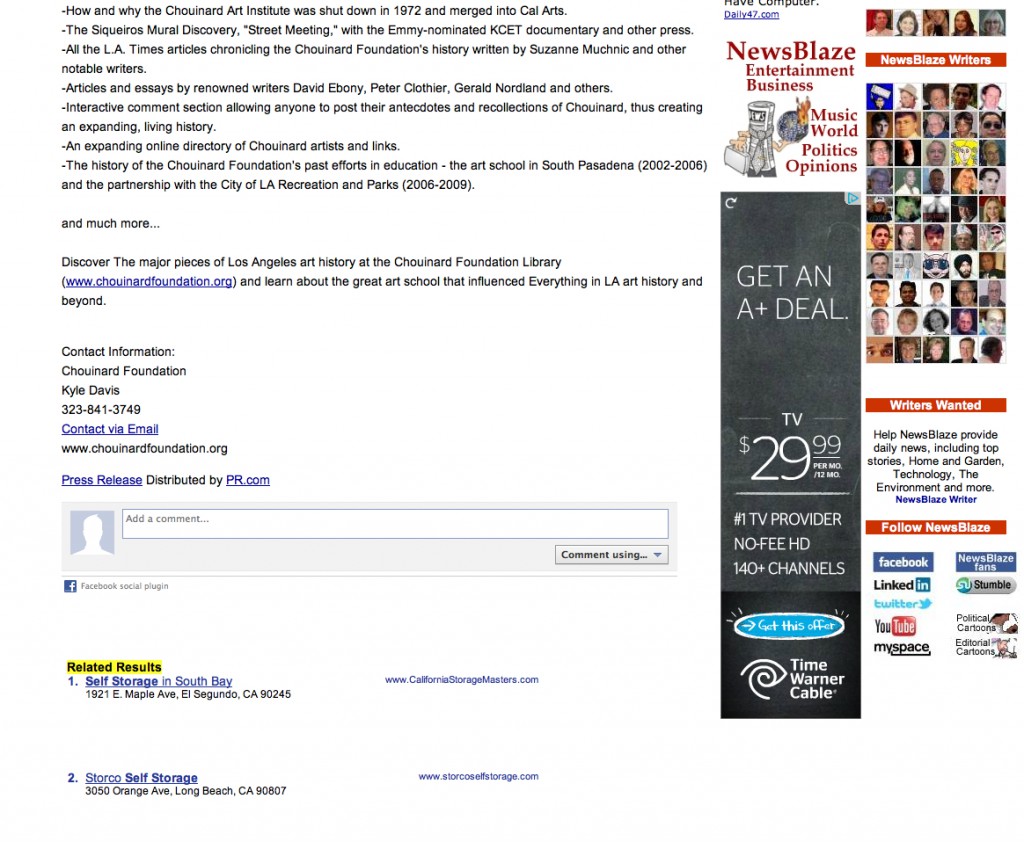Siqueiros 2010
Los Angeles Times CALENDAR
Sunday, September 12, 2010
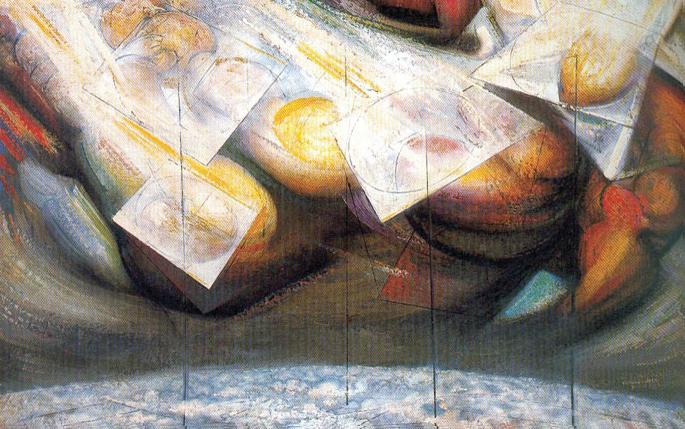
FAMED MURAL: A colorized rendering of David Alfaro Siqueiros’ “America Tropical” (1932) on Olvera Street. A viewing area is under construction.
More than an activist
Murals, landscapes and a multimedia show reveal the many sides of Siqueiros.
SUZANNE MUCHNIC
David Alfaro Siqueiros is a giant of art and political activism in Mexico, where he was born in 1896 and spent most of his 78 years. His encounter with Los Angeles was brief — about seven months in 1932 — but it still reverberates in efforts to preserve “America Tropical:’ an incendiary mural on Olvera Street that was painted over soon after he finished it, and in the work of contemporary Chicano artists.
And now, in a serendipitous convergence of events, Siqueiros is having his biggest Southern California moment in decades:
- Construction of the mural’s shelter, viewing platform and interpretive center began last week at El Pueblo de Los Angeles Historical Monument and is expected to take about two years.
- Today, “Siqueiros: Landscape Painter:’ a major exhibition that reveals a little-known but powerful aspect of the artist’s work, will open at the Museum of Latin American Art in Long Beach.
- On Sept. 24, “Siqueiros in Los Angeles: Censorship Defied:’ a multimedia show about the artist’s Southern California sojourn and its aftermath, will begin at the Autry National Center in Griffith Park.
The independently organized exhibitions will tell part of a story that has waited too long to be told, says Luis C. Garza, a Los Angeles-based photojournalist, writer and documentary producer who met Siqueiros in 1971 at a world peace conference in Budapest, Hungary, and conceived the Autry show.
“Siqueiros changed the visual landscape of Los Angeles:” Garza says. “It took 30 or 40 years for the seed he planted to germinate. Now we are celebrating it in a manner that is giving the artist his due”.
Born in Chihuahua and raised in Mexico City, Siqueiros was the youngest of Mexico’s triumvirate of leading social realist muralists, including Diego Rivera and Jose Clemente Orozco. They were all trained at the San Carlos Academy of the National School of Fine Arts, but developed individual styles partly shaped by political and social unrest in Mexico. He joined a revolutionary movement while still in his teens, beginning a long engagement with Communist and militant activities that often put him in conflict with authorities and occasionally landed him in jail.
With the help of friends, Siqueiros escaped house arrest in Taxco to come to Los Angeles, where he produced three murals, his only such works in the U.S. “América Tropical” is on a second story exterior wall of Italian Hall and eventually will be seen from an extension to an adjacent building. The mural’s central image — and source of controversy — is a Mexican Indian tied to a cross, crowned by an American eagle.
Another L.A. mural, “Street Meeting,” featuring a labor organizer addressing a crowd, has long been buried under paint and structural components of a Korean church that formerly housed Chouinard School of Art. Discussions about uncovering the mural began five years ago but no resolution has emerged. “Portrait of Mexico Today,” a commentary on Mexican political and social conditions commissioned for the home of filmmaker Dudley Murphy, was moved to the Santa Barbara Museum of Art in 2001.
Siqueiros’ exile in Los Angeles ended in November 1932 when he was denied a visa extension. He traveled on to Argentina and Spain, where he fought in the Spanish Civil War, and returned to Mexico in 1939, but not to a peaceful existence.
No exhibition can encompass all the turmoil and passion of Siqueiros’ life and art. But the Autry and MOLAA shows offer fresh perspectives on the artistic achievements and social convictions of an artist whose local presence will grow when “América Tropical” goes on view. An effort to uncover the mural began in 1969 but didn’t gather force until 1988, when the Getty Conservation Institute teamed with the city department that administers the site. The Getty Foundation has spent $3.95 million on the project and the city has contributed $5 million, but completion has been repeatedly delayed by bureaucratic entanglements, personnel changes and technical problems. The construction project announced Wednesday is expected to take about two years.
Jonathan Spaulding, executive director of the Autry’s Museum of the American West, says that “Siqueiros in Los Angeles: Censorship Defied” will introduce a story line to be continued at the downtown Los Angeles mural center. Unlike the landscape exhibition in Long Beach, the Autry show is, in Spaulding’s words, “a narrative about Los Angeles that uses Siqueiros and a generation of artists who came after him as a lens to look at the identity of the city and trace the recognition of its Latino identity, very contested in the 1930s and now celebrated. Siqueiros launched a movement not only of street art and murals in public space, but also a movement to reconceptualize the identity of Los Angeles.”
The assembly of about 100 paintings, drawings, photographs, reproductions and historical documents begins by outlining the artist’s formative years, then sets up a broad artistic and social context for his Los Angeles visit and delves into the production and official rejection of “América Tropical.” The show also explores Siqueiros’ materials and techniques and how the badly faded mural has been carefully conserved but not repainted by the Getty Conservation Institute.
In the final section, works by Los Angeles artists including Barbara Carrasco, Judy Baca and Wayne Healy indicate how Siqueiros’ legacy has continued. A video presentation of murals in Southern California is accompanied by interviews with the artists who painted them.
ARTIST WITH A COSMIC VISION: Stratospheric Antennas shows lines projecting from volcanos to floating forms in the sky.
For museum visitors who know Siqueiros only as a hard-hitting muralist, the landscape show in Long Beach may come as a shock. But he painted landscapes throughout his career, including periods of incarceration, and they are obviously from the hand of an artist with enormous energy, deep feelings and strong convictions.
Organized by the Museo de Arte Carrillo Gil in Mexico City and curated by Itala Schmelz and Alberto Torres, the show of about 75 works — roughly half the landscapes Siqueiros painted — is teeming with emotion and drama. Trees all but explode, oceans roil and mountains rise to awesome heights. Nature can be threatening or magically wondrous, but it never sits still.
Cynthia MacMullin, MOLAA’s senior curator, who coordinated the Long Beach exhibition, describes Siqueiros as an artist with a cosmic vision. In a painting called “Atomic Aircraft,” he dreamed up a sort of organic spaceship and set it adrift on a curved wood panel. In “Stratospheric Antennas,” also painted on a curved surface, thin lines projecting from volcano peaks extend into a sky full of floating forms, possibly UFOs.
The subject matter of other works is easier to identify, but it may be presented from an aerial view or a low vantage point. In “Rocks With Figures,” viewers look up at women walking along the ridge of a volcanic rock cliff. It’s one of many works portraying people at one with nature. But others portray armies of miniature figures dwarfed by huge trees or mountains.
Still other paintings grapple with the effects of human force. “The Explosion of Hiroshima” protests the bombing of Japan that ended World War II. Abstract paintings of futuristic cities seem to praise modern ingenuity while warning against urban sprawl.
“The paintings are very sensual,” MacMullin says. “They make you feel as if you are part of the scene.” And most are packed with energy. “It’s all about cinematic movement,” she says. “Everything is in action.” But whether the action is creative or destructive — or both — is open to question.
Siqueiros did not paint from nature, as Schmelz and Torres point out in an introductory statement. “He was not a lover of nature in a botanical sense; on the contrary, his approach was that of a modern man who establishes a relationship between force and mastery.”
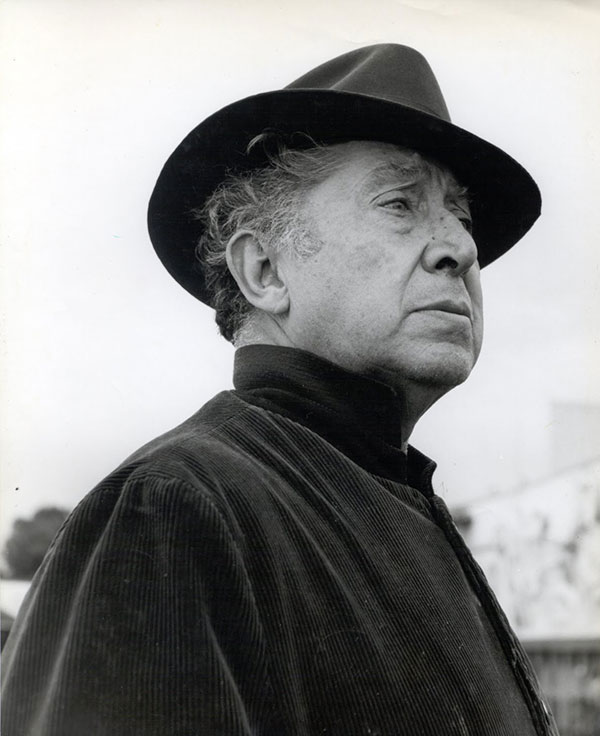
MAN OF MANY SIDES:
David Alfaro Siqueiros



